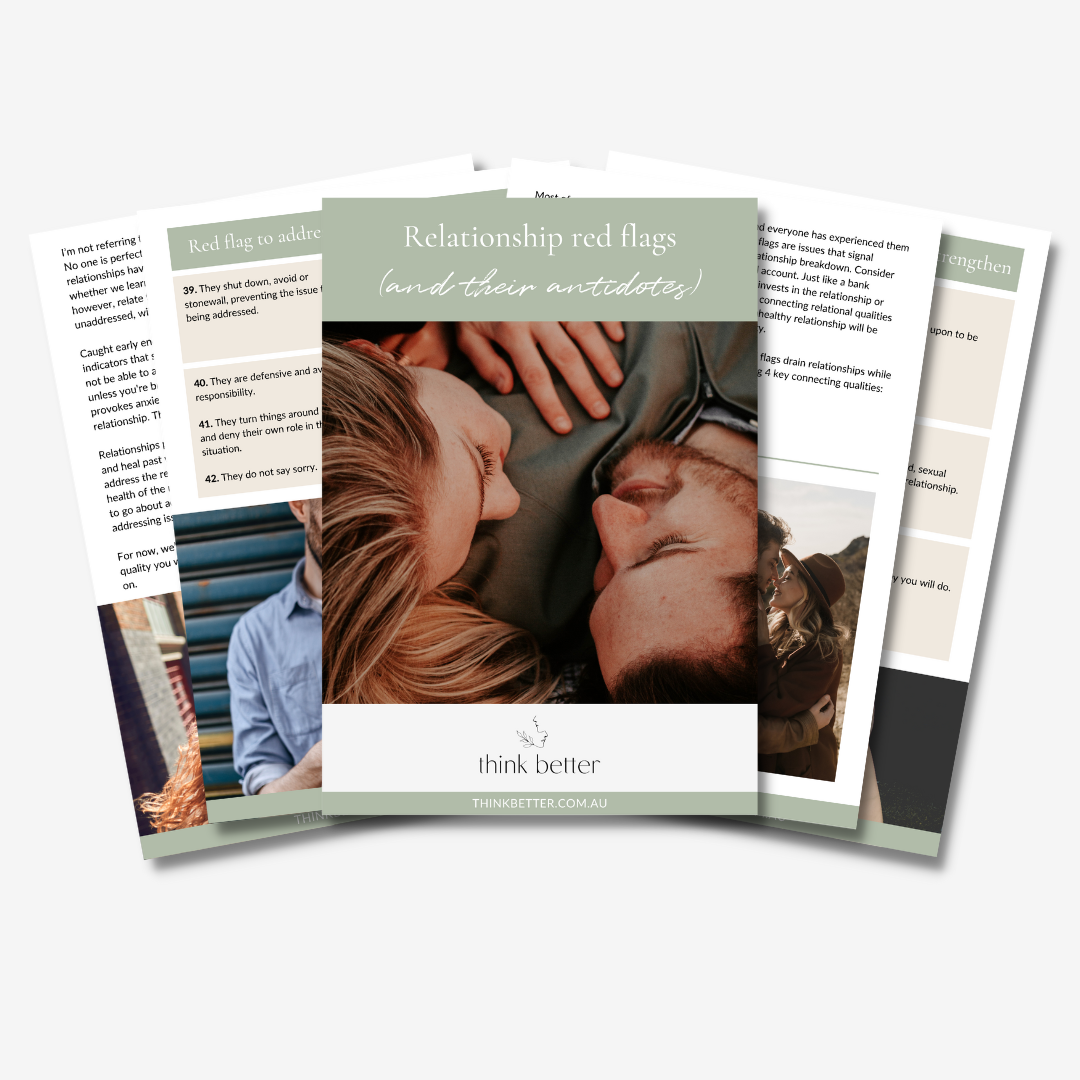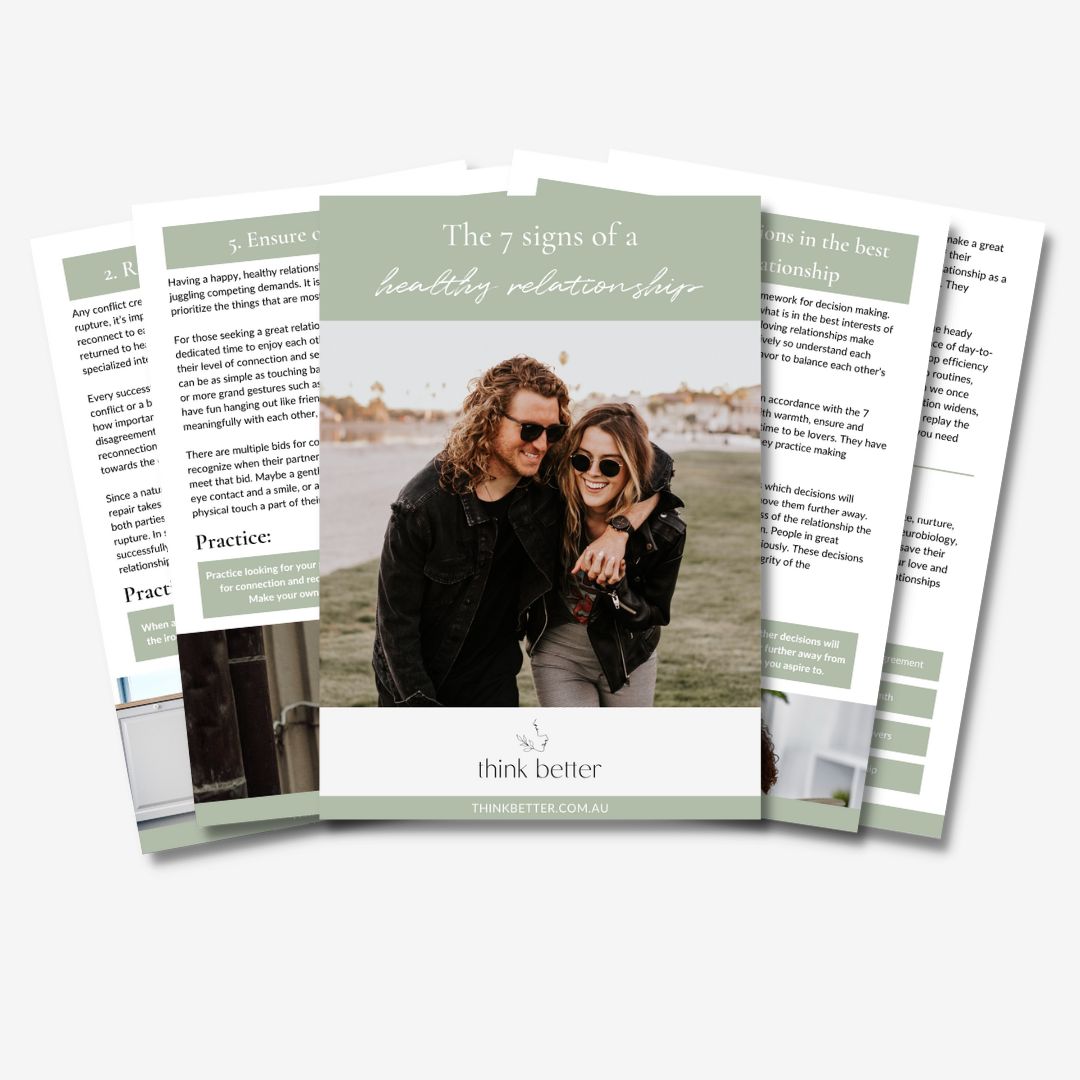Conflict is an often unwanted but unavoidable feature of being in a relationship. Not many people want to experience it, yet there can be great value in conflict. It is a necessary part of relationships that can stimulate change, growth, and new ways of being. When you learn to manage conflict well you strengthen not only your relationships, but a healthy sense of self too. Conflict is the ultimate training ground to better understand yourself and those who are important to you. It is also the ultimate environment to develop and practice the ability to calm and soothe yourself. When you have confidence that you can experience conflict and it will be resolved peacefully and respectfully, the relationship deepens and strengthens. Healthy conflict builds truly resilient relationships.
Conflict doesn’t just explode, rather issues build up over time. We can learn to be more aware of our conflict patterns so that we can manage ourselves better when conflict does tip over into an argument or, even better, address issues before they escalate. Conflict often begins with unmet needs or a values clash, which gives rise to a nagging feeling that something must change. Since addressing issues requires us to have difficult and uncomfortable conversations, there may be a tendency to put them off or blurt out something unhelpful in the heat of the moment. We then run our usual conflict pattern – perhaps we distance ourselves or push for an outcome. We might yell, belittle, or sulk. Often the way we manage conflict can feel emotionally threatening. This not only fails to address the issue but makes the disconnect in the relationship feel worse.
Effective conflict management requires the right timing along with an ability to manage uncomfortable thoughts and emotions. It can be difficult to find the time and be in the right headspace to sort things out when we are also juggling deadlines, work, competing demands, household chores, children’s commitments, exercise, family and a social life. Despite our best intentions we may find ourselves falling exhausted into bed at the end of the day, perhaps after numbing ourselves with a combination of television, snacks, work, social media and/or a glass (or several) of wine. If we are lucky, we might get a full night’s sleep before we do it all over again…It is far too easy to push aside nagging issues and hope they go away.
There are signs that impending conflict is building if you are aware of them. You may notice a shorter fuse with your loved ones or colleagues, your patience with everyday tasks reduces, a gnawing ache in your chest or stomach creeps in. Without even noticing, you will be breathing shorter, shallower breaths or even holding your breath at times. All the while the issue builds – it doesn’t just go away. Whether you realize it or not it bubbles away like a pot full of boiling liquid. If you keep pushing down what needs to be addressed, the lid will blow off at some point and everything will spill out – messily! That tipping point can be a major stressor like an affair or perhaps it seems minor – like leaving the toilet seat up repeatedly. Sometimes you can find yourself arguing and can’t even pinpoint what the argument is about.
The most important thing to remember when arguing is you will only come to a solution when you are calm enough to find it. When in conflict, particularly with the person you love the most, your body will respond as if it is faced by a saber-toothed tiger. Your autonomic nervous system sees conflict with your loved one as a real threat to your survival. Conflict triggers your sympathetic nervous system (the fight/flight/freeze response) which musters your body’s resources so that you can run away from the threat or fight it off to maintain survival. Your heart rate accelerates, blood flow is constricted, muscles strengthen and tense and non-essential systems like sex drive and digestion are shut down. Your focus narrows only to the threat – unfortunately in this case, your loved one. The part of your brain that is responsible for decision making and executive functioning (the pre-frontal cortex) goes offline. You don’t need to negotiate or find solutions when you are under threat – you just need to react to survive.
Unfortunately, what this means in conflict is you are responding to the perceived threat like your life depends upon it. In truth, what you really need is to calm down and reconnect with the person to be able to resolve conflict. Rather than reacting to conflict like it is a fight to the death, with a winner and loser, you need to break the cycle of emotional reactivity and restore calm and connection. It has to become more important to reconnect with your loved one than to win or be right. This is only possible by switching off the fight or flight response and returning your body to the parasympathetic state – the rest and restore state. This is the natural state your body returns to after a threat has passed. You must be in this state to resolve conflict effectively.
Here’s 3 practices you can do right now to help you do conflict better:
1. Recognize your conflict patterns
Your mind functions a lot like a computer. When in conflict your conflict program runs and you will play out a distinct pattern which determines how you are going to feel and behave. These patterns are mostly formed in childhood. You will have many repetitive patterns of thoughts, feelings, and behaviour. These patterns determine how you feel about yourself, your ability to cope with conflict, how you respond to it and how you act towards your partner when you are in conflict.
A pattern of thought feeds the way you feel and the way you feel impacts how you react (or respond). Consider the thought pattern, “This (the conflict) is really bad, and they are going to leave me”. This thought naturally gives rise to predictable feelings such as tension, anxiety, fear, and frustration. Now consider how you behave when you feel these types of emotions. You may go on the attack, withdraw to protect yourself or oscillate between the two – not a good recipe for conflict resolution.
Practice:
Consider a past repetitive conflict and investigate your patterns around it. Identify how you thought, felt and reacted at the time. Now consider how that impacted the conflict. Did it escalate it or help to solve it? Notice any patterns that you replay in conflict situations.
When doing so, take a step back and watch from a distance how your patterns play out. This is often called the observer stance and is one of curious non-judgement. Allow yourself to wonder how you could better respond if you interrupted or changed the pattern in some way.
2. Breathe
As mentioned earlier the sympathetic system (fight/flight/freeze response) is specially designed to help you when you’re under threat. It often responds in times of conflict by optimizing the body’s resources – changing breathing, heart rate, muscle tension, and focus. This is fantastic when the threat is real and imminent but not so great when the threat is perceived and is focused on your loved one. Remember the part of your brain responsible for decision making and planning also becomes less active. When you are in conflict you cannot solve it if you are still emotionally triggered.
In contrast, the para-sympathetic system is the rest and restore response. It kicks in when the threat has passed. Consider after you have received a fright. You may take a big sigh and wait for your heart rate to decrease and your breathing to slow. You may tell yourself, “It’s ok, everything will be alright”. Slowly your muscles soften and relax, your focus and decision making expands. This is the type of soothing you can learn when you are in conflict.
First, it is important to remove yourself from the conflict long enough to calm yourself down. Let the person know that you need to calm down and will return to sort it out once you are more settled. A quick path to calming and self-soothing is to consciously learn how to slow and manage your breathing. (This takes practice for it to work in the heat of the moment.)
Practice:
Take 3 minutes to actively manage your breathing. Find a comfortable spot with your back straight and body as relaxed as you can and put your phone’s timer on.
Take some big, deep breaths and sigh them out. Focus on your breathing, consciously breathing in and out through your nose. Your goal is to rest your attention on the breath and make your breath as slow, smooth, and relaxed as is comfortable. Focus on encouraging your body (particularly your head, neck and shoulders) to soften and melt in the process.
Repeat several times a day so that you are well practiced when conflict arises.
3. Manage your self-talk (and what you say!)
Self-talk is a standard feature of your mind. It’s that mini-me voice inside your head which sounds like your voice but often takes on qualities from your parents or significant others. Your very own mini-me can be your biggest cheerleader or your harshest critic. Unfortunately, the latter is most often the case, and it can be particularly harsh when you are emotionally triggered! You are at risk of a range of unhelpful self-talk such as blaming, shaming, or catastrophizing (making things seem much worse than they are). Since your emotionally triggered self-talk informs how you behave and what you say in conflict, it’s important to take note before it takes over.
The things you say to yourself about your loved one when in conflict are particularly focused on the negative. You will zoom in on the negative qualities they display in conflict, temporarily obliterating all their good qualities. This is very different to when you are feeling safe and secure. When you are calm, you view them as a whole person whose positive qualities outweigh the negatives. You find it easier to feel close and loving. Unfortunately, when you are in conflict, you will find it difficult to feel love and may view your loved one as someone you need protection from. If you allow the negative self-talk to come out of your mouth you can do a lot of damage to the safety and security of the relationship.
Learning to self-soothe with encouraging, soothing self-talk is vital. While taking the time to slow and lengthen your breathing, become aware of your self-talk. Try something to help you keep perspective that the conflict is not the end of the world and your loved one is not a saber-toothed tiger! For example, “We’ll get through this – we’ll find a way”, or “I love them and really want to find a solution.”
Practice:
Stop and observe what you are saying to yourself when you are in conflict. This is your self-talk and your practice is to notice it.
Rather than assess whether it is right or wrong, simply to label it as helpful or unhelpful to creating a healthy relationship. If it’s helpful – keep it. If it’s unhelpful consider a more helpful statement.
Say something encouraging to yourself about working through the conflict. Then practice, and practice some more.
Conflict resolution is most effective when you are calm enough to generate solutions. If done well it can strengthen your relationships and your sense of self. You can start to transform the way you experience conflict by recognizing your conflict patterns, taking a break to breathe and settle, and managing your self-talk. Not many of us like conflict, but it is an opportunity to learn how to have secure, healthy relationships.





Insightful, succinct and constructive advice, as always Amy, thank you.
Thank you Steve. I appreciate the compliment given you are a person known for being all of those things yourself!